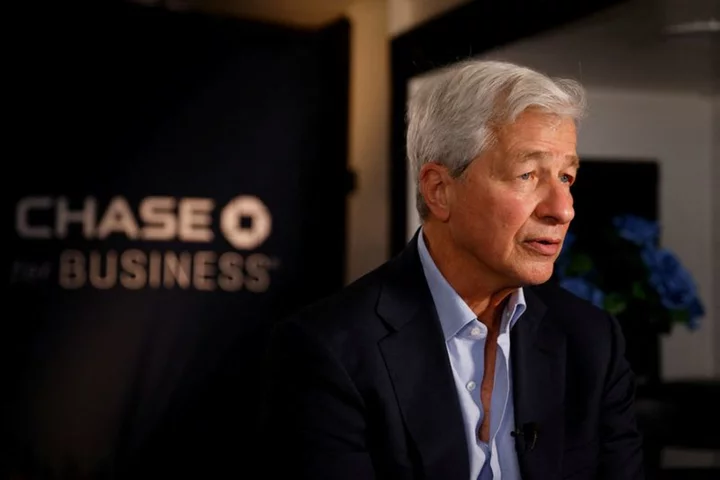By Nupur Anand
NEW YORK As JPMorgan Chase & Co CEO Jamie Dimon prepares to take the stage for the bank's investor day on Monday, he can expect plenty of questions about the bank's purchase of failed First Republic Bank, as well as about succession, following James Gorman's plan to step down as Morgan Stanley CEO.
Analysts will seek more details about the deal and JPMorgan's plans to integrate First Republic's business into the largest U.S. bank.Here are some key themes that investors are watching.
FIRST REPUBLIC
JPMorgan has agreed to undertake $173 billion of the failed bank's loans, $30 billion of securities and $92 billion of deposits after First Republic was shuttered down by authorities.
Dimon had said that he expects blowback from the FRC deal earlier this month in an interview on Bloomberg TV.
An acquisition of this scale will raise question on integration, execution risks, employee retention among others, analysts believe.
"JPM views FRC as more complementary to its mass affluent approach than its ultra high net worth offering," Jason Goldberg, Brian Morton and Matthew Kesselhaut analysts at Barclays said in a note adding that they expect FRC to be additive to JPM's consumer and community banking business.
JPMorgan has made 19 acquisitions since 2020 but the last major purchase of this scale by the lender was in 2008 of Bear Stearns.
SUCCESSION
After Morgan Stanley CEO James Gorman's announcement on Friday to step down over the next 12 months, all eyes are going to be on Dimon's succession plan.
The 67-year old has been at the helm for over 17 years, longer than Gorman, who at 64 years has been the CEO for 13 years.
JPM's this year's proxy statement has identified COO Daniel Pinto “as a key executive who is immediately ready to step into the role of sole CEO, should the need arise in the near-term.”
Pinto who has been with the bank for nearly four decades is currently the president and chief operating officer of the bank.
ECONOMY
As JPMorgan's performance and outlook is widely seen as an economic bellwether, all eyes are also going to be on any warning signs it forecasts about the economy and its likely impact on the banking industry, even though the bank seems largely insulated for now.
Dimon has warned that a failure to raise the U.S. debt ceiling is potentially catastrophic, and the bank has created a war room to tackle the situation with daily meetings.
The CEO along with other executives met Janet Yellen in Washington this week to discuss the health of the banking system and the debt ceiling issue, a source said.
GROWTH
In its first quarter earnings, the country's largest lender emerged as one of the biggest beneficiaries of the recent banking turmoil, brushing aside concerns that roiled the banking industry after the collapse of two lenders in March.
The investor day should further highlight the “Goliath is Winning” theme, Wells Fargo analyst Mike Mayo said in a note.
JPMorgan is also expected to reiterate its target for return on tangible common equity -- a key metric which measures how well a bank uses shareholder money to produce profit -- of 17%.
"What we may hear about is what this ROTCE could be if a recession hit in '23, which would translate into higher credit costs and potentially rate cuts," said Erika Najarian, Robert Placet and Nicholas Holowko, analysts at UBS.
Commentary around deposit growth, strategic opportunities, loan loss provisions, and expenses are some of the other themes that will be keenly watched.
Dimon has clarified that it is unlikely that they will acquire another struggling lender.
(Reporting by Nupur Anand in New York; Editing by Nick Zieminski)

